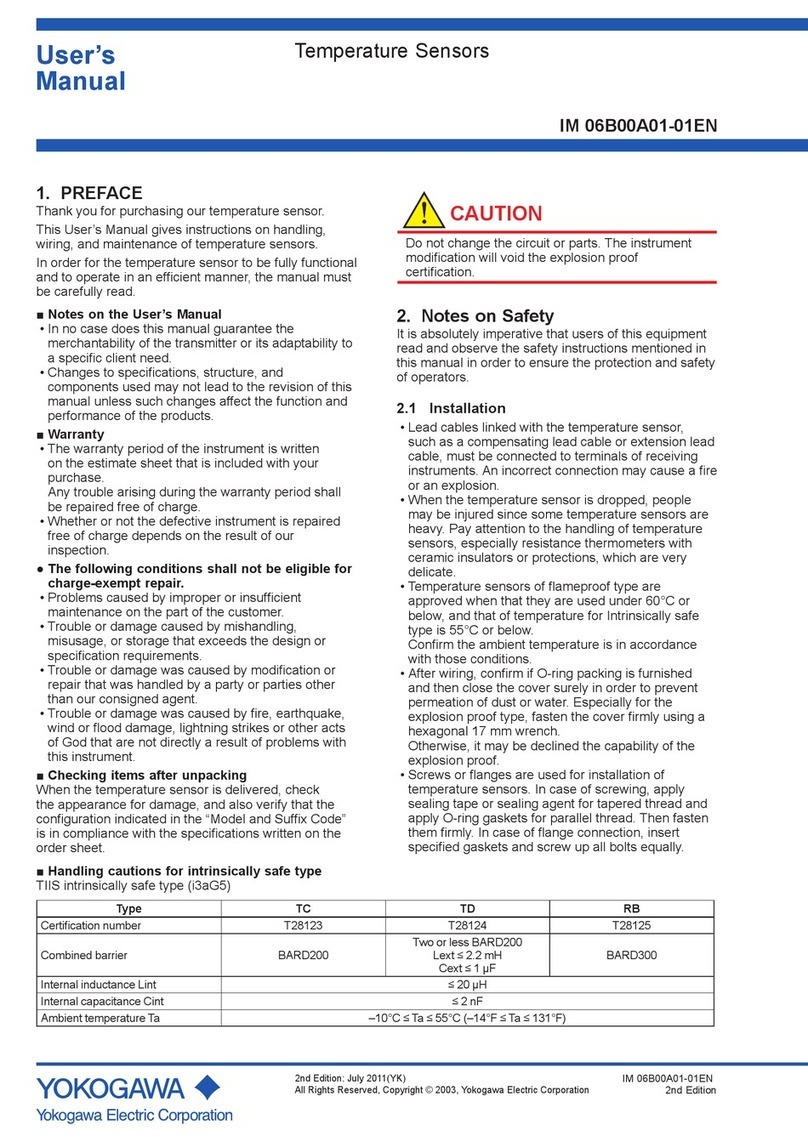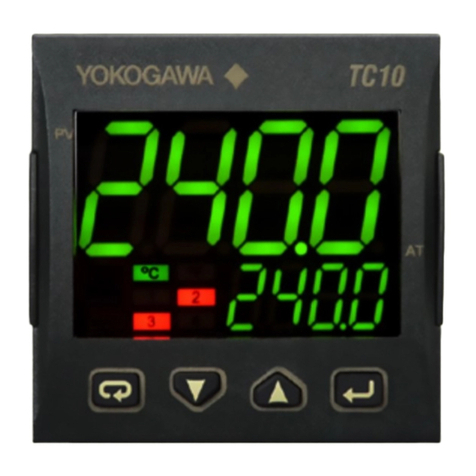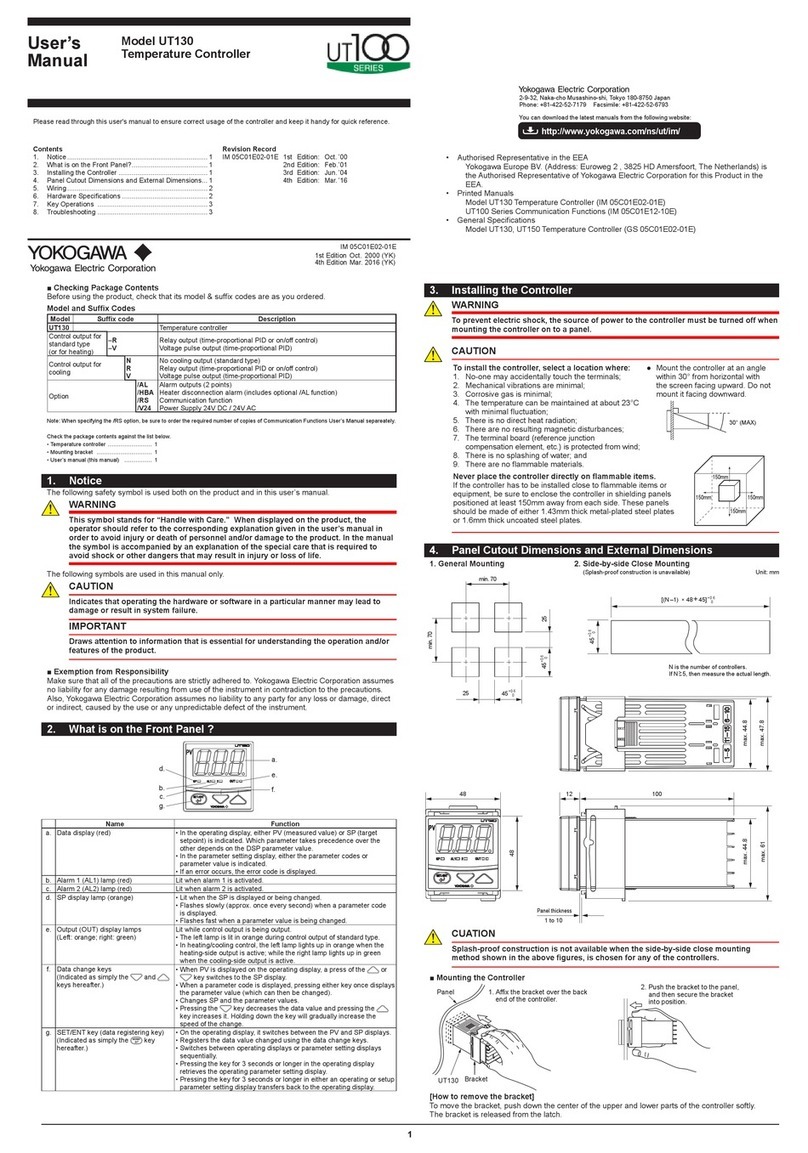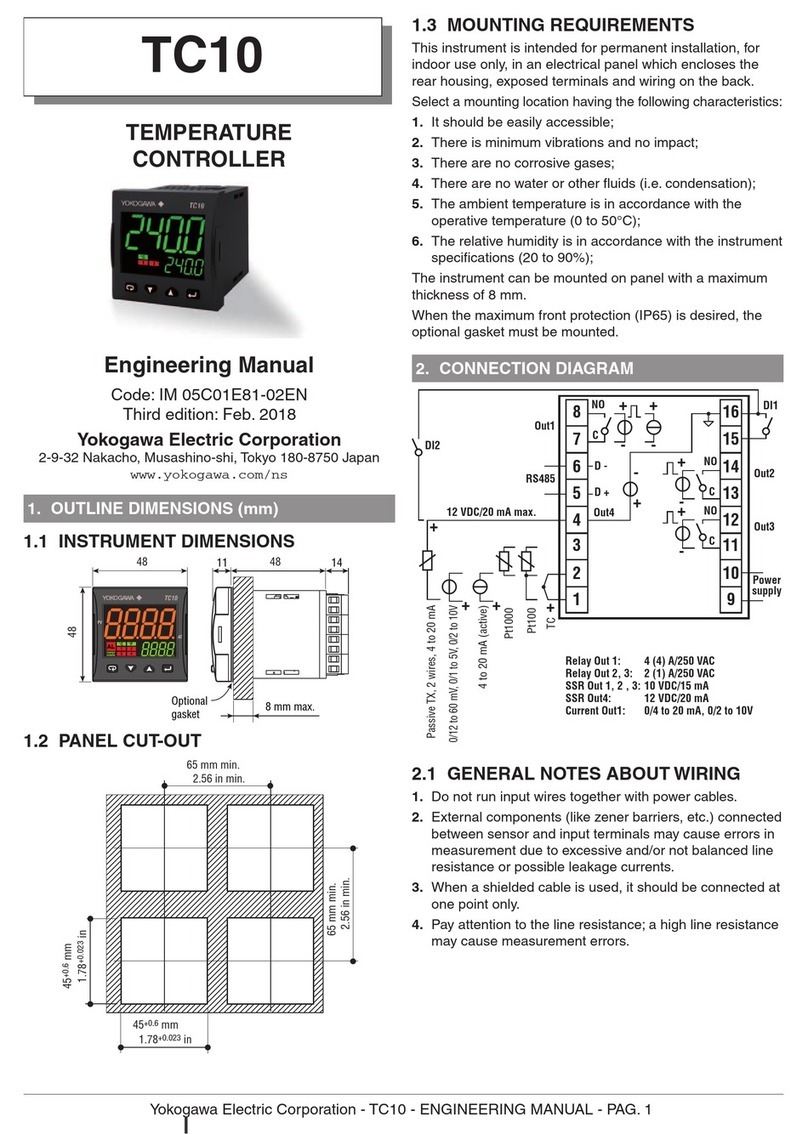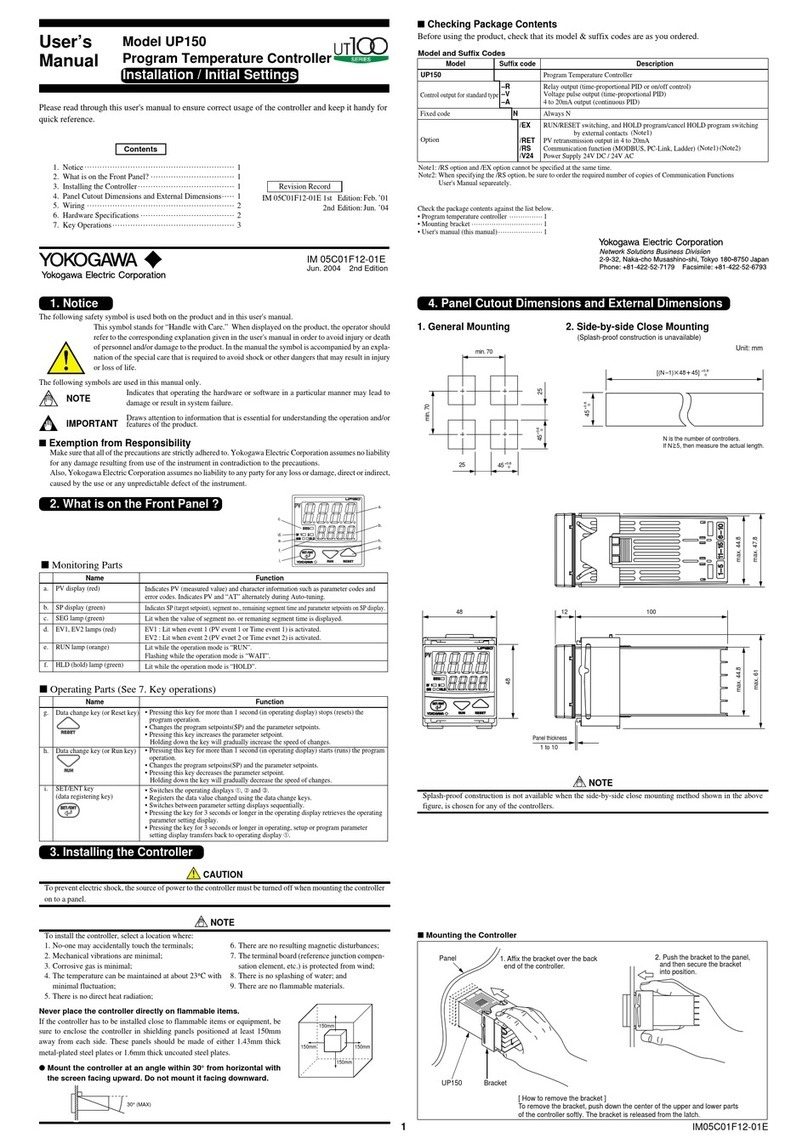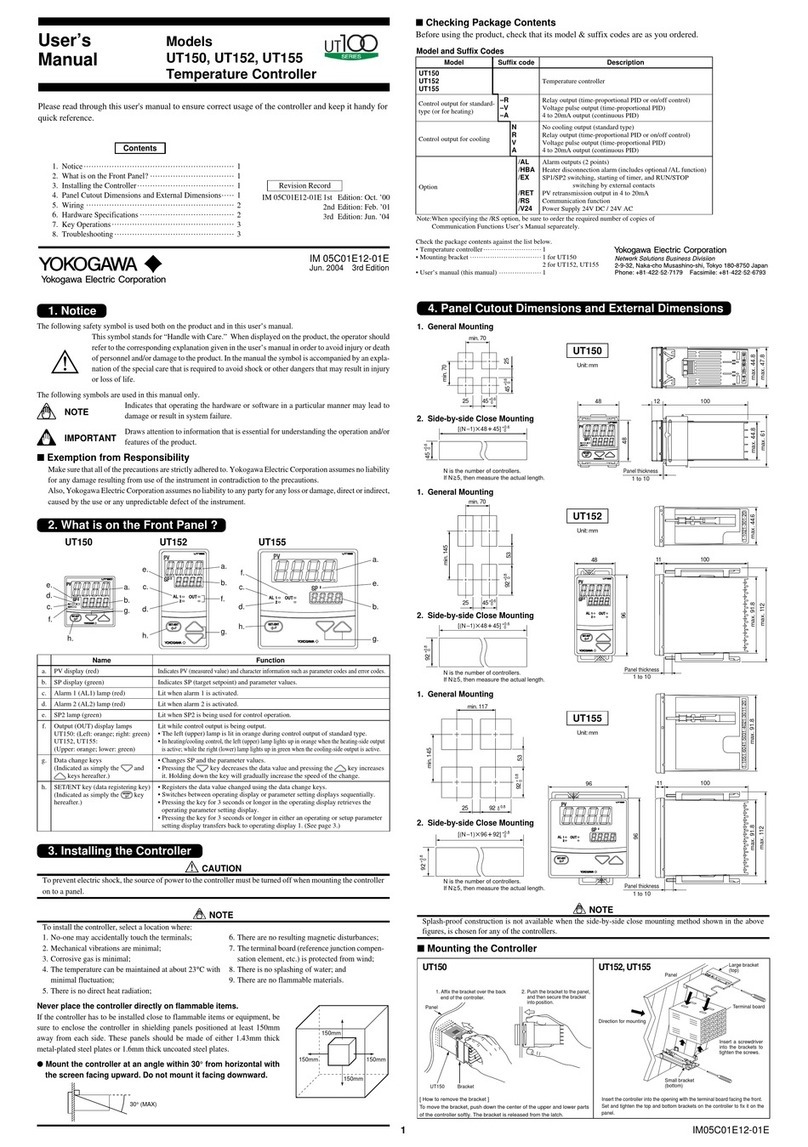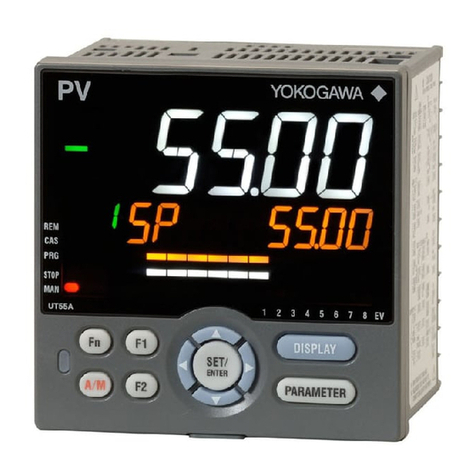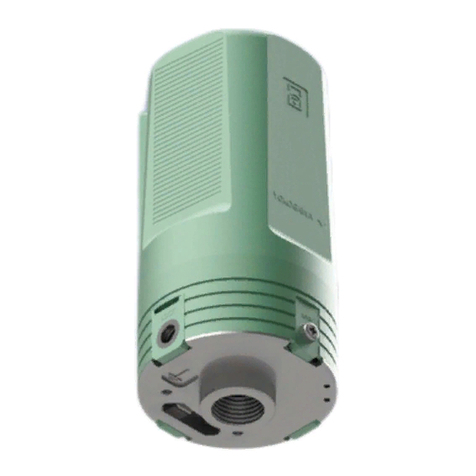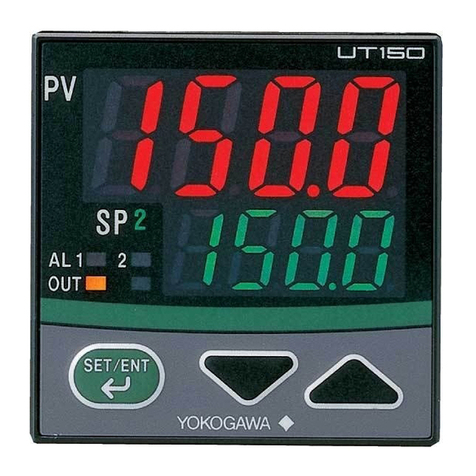IM 05C01F12-41E 1
■Checking Package Contents
Before using the product, check that its model & suffix codes are as you ordered.
Please read through this user’s manual to ensure correct usage of the controller and keep it handy for quick
reference.
CONTENTS
1. Notice ............................................................................................................................... 2
2. What is on the Front Panel?......................................................................................... 3
3. Installing the Controller ................................................................................................ 4
4. Panel Cutout Dimensions and External Dimensions.................................................. 5
5. Wiring.............................................................................................................................. 6
6. Hardware Specifications................................................................................................ 9
7. Key Operations............................................................................................................. 10
8. Programming ................................................................................................................ 19
9. Troubleshooting............................................................................................................ 19
Check the package contents against the list below.
•Program temperature controller
•Mounting bracket
•User's manual
1
1
1
...............
................................
....................................
Model
Model and Suffix Codes
Suffix code Description
UP150 Program Temperature Controller
–R
–V
–A
Relay output (time-proportional PID or on/off control)
Voltage pulse output (time-proportional PID)
4 to 20mA output (continuous PID)
NAlways N
Option
/EX
/RET
/RS
/V24
RUN/RESET switching, and HOLD program/cancel HOLD program switching
by external contacts
PV retransmission output in 4 to 20mA
Communication function (MODBUS, PC-Link, Ladder)
Power Supply 24V DC / 24V AC
Control output for standard type
Fixed code
Note1: /RS option and /EX option cannot be specified at the same time.
Note2: When specifying the /RS option, be sure to order the required number of copies of Communication Functions
User's Manual separeately.
(Note1)
(Note1)(Note2)
